Udall Center Bids ‘Farewell’ to Former Director Bob Varady After 42 Years at UArizona
Bob will maintain a relationship with the Udall Center as Environmental Research Professor Emeritus.
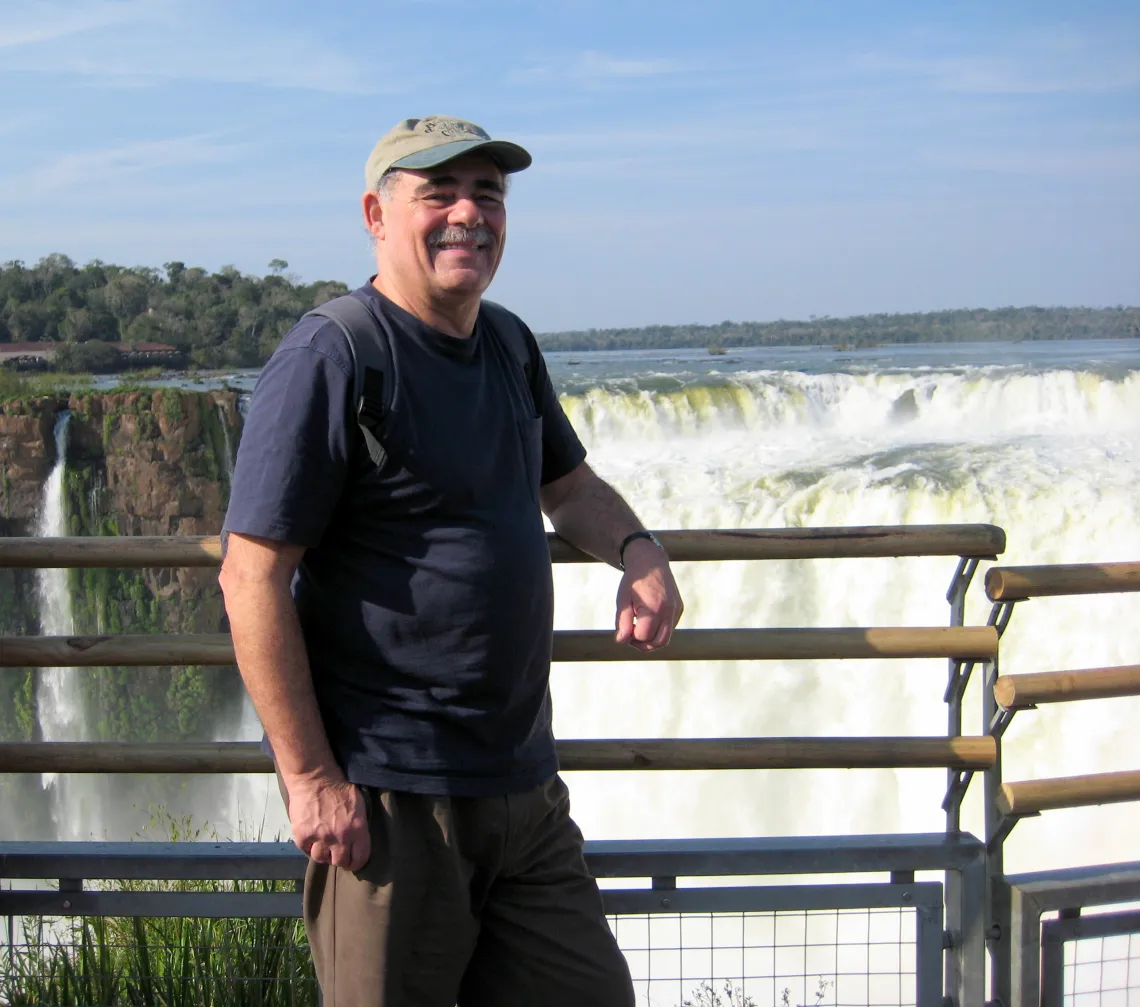
Bob Varady at Iguazu Falls in Brazil after the 2010 American Geophysical Union Conference.
Image courtesy Bob Varady.
How can one sum up more than four decades in service to a single institution?
According to a 2020 study by the Bureau of Labor Statistics, the average person spends about four years as an employee of a company or institution.
By the time Bob Varady retired from his post at the Udall Center for Studies in Public Policy on June 30, 2023, he had dedicated more than ten times that average to the University of Arizona. Prior to his 34 years at the Udall Center, Bob spent nearly a decade as a researcher at the UArizona Office of Arid Lands Studies in the College of Agriculture, where he managed development projects in Yemen, Niger, Mauritania, and the U.S.-Mexico border region.
A Giant in His Field
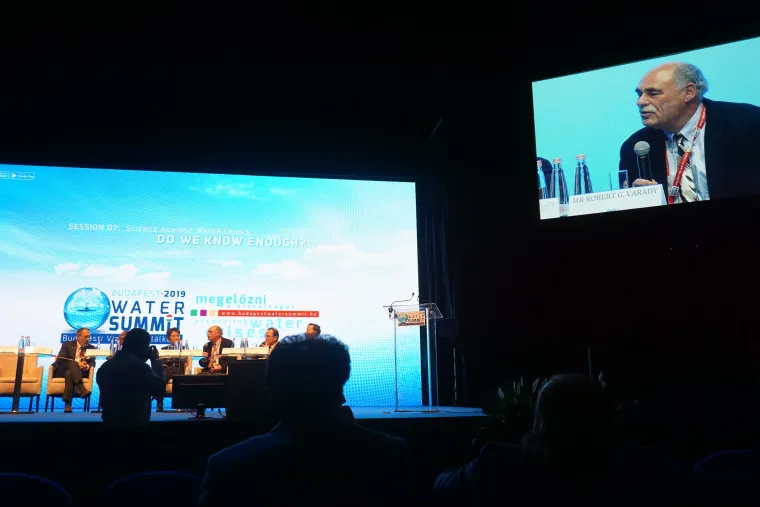
Bob presents at the 2019 Water Summit in Budapest, Hungary.
Image courtesy Bob Varady.
Bob achieved the titles of (Full) Research Professor of Environmental Policy, Adjunct Research Professor of Arid Land Studies and Adjunct Research Professor of Hydrology and Atmospheric Sciences in 2002.
Over the course of his more than five-decade career (his first academic appointment was as a Lecturer in the Department of Mathematics at Dowling College in Oakdale, New York in 1971), Bob’s voice, insights and expertise on water governance and policy gained international respect and acclaim. He directed the French National Science Research Center’s Joint International Water and Environmental Policy Unit from 2008-2011 and consulted on multiple projects at UNESCO’s in Paris since 1999.
At the Udall Center, where he came on board as Associate Director in 1989, soon after the Center was founded, Bob held a number of positions including Interim Director (1996-1998, 2016), Acting Director (1992-1993, 2007-2008, 2014), Director (2016-2017) and, of course, Research Professor of Environmental Policy (2002-2023).
Bob also managed the Udall Center Fellows Program for its first 34 years of existence.
An Unparalleled Mentor and Friend
Bob mentored dozens of up-and-coming scientists and academics at the Udall Center and was well known and respected as a terrific writer, editor, colleague and friend. Upon learning of his imminent retirement this summer, many current and former Udall Center employees commented on how Bob was instrumental in making them feel welcome in the early days of their employment. Many others cited Bob as a major influence in their academic trajectories.
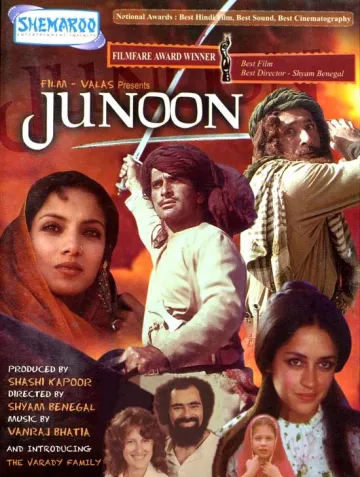
Bob and his wife Evie appeared as extras in the 1978 Indian movie “Junoon” during a trip to India and, with his wife and daughter, even made it onto one version of the movie poster, seen here (with assistance from Photoshop).
Image courtesy Bob Varady.
Bob’s 48-page curriculum vitae is impressive, to say the least, and intimidating to many of those beginning their careers in academia. His exploits and achievements as a scientist and intellectual include:
- 250+ publications (including 70 peer-reviewed journal articles, 47 book chapters and 50 technical reports)
- 274 professional presentations
- $16.9 million in grants and contracts
Bob also rivals the best when it comes to world travel; he’s visited a total of 112 countries (51 professionally) on every continent but Antarctica – a passion he will no doubt continue to nurture in his retirement.
A quiet but commanding presence in the office, few knew that Bob’s personal history was just as fascinating as his professional legacy. Born in Budapest, Hungary in 1943 and interned in the Budapest Ghetto as a toddler in 1945, Bob was a Holocaust survivor and an immigrant-turned-United-States-citizen, having moved to the U.S. from Paris, France, with his family at the age of nine.
He Was There
Bob is the last-standing faculty member at the Udall Center who was present just after the organization began functioning in mid-1988 (its charter was approved in 1987). Post-retirement, he will remain with the organization as Research Professor Emeritus – a fact for which we are all immensely grateful (and that will continue to keep him busy whenever he has the time and will to dedicate to our continuing work and research).
He also just so happened to be at the U.S. Capitol building in Washington, D.C. in 1992, when legislation was passed to establish the Udall Foundation (which is a major source of funding for the work of the Udall Center).
Bob wrote the following about that experience:
I Was There: The Birth of a Foundation
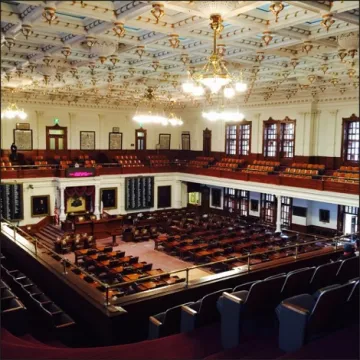
A photo of the congressional gallery taken by Bob during his 1992 trip to Washington, D.C.
Image courtesy Bob Varady.
In the early 1990s, as associate director of the Udall Center, my visits to Washington, DC, were infrequent and brief. On one particular early March day in 1992, I was in town to scope out a prospective (and eventually unrealized) relationship with a wholly forgettable educational consortium from Texas.
But March 1992—a month-and-a-half into George H. W. Bush’s last year as president—was a fortuitous time for me to be in the nation’s capital. For months I’d been carefully tracking the fits-and-starts progress of the bill that would create the Udall Foundation. The Morris K. Udall Scholarship and Excellence in National Environmental and Native American Public Policy Act had been passed by the U.S. Senate in late November 1991. But during the subsequent winter recess, President Bush had refused to sign the legislation, resulting in a dubious and constitutionally-questionable pocket veto.
Fortunately, at the start of the new year a number of the bill’s strongest Senate supporters met with White house officials and managed to rescue the legislation, modifying it to meet the president’s putative objections, assigning a new number S. 2184, and approving it anew on February 4th.
On the evening of March 2nd, I learned that the House version of the new bill (H.R. 4185) was coming up for a vote on the floor of the House—the very next day!
By chance, my calendar was free that afternoon and I went to the Capitol building and planted myself in the front row of the gallery. This was my first time (and as it happens, my last time) there as a spectator and I tried to take it all in. By now passage of the bill by the Democratically-controlled House was a foregone conclusion, so there was certainly no tension or apprehension. The room was mostly empty except for those who spoke, and by most measures the voting procedure was pro-forma. The speeches in favor were predictably bombastic, and the words of praise for Mo Udall’s accomplishments rivaled those for a candidate for sainthood.
The parade of speakers included two who have especially stuck in my mind: Eleanor Holmes Norton of the District of Columbia, flamboyant and draped in a bright red outfit, and speaker Tom Foley, understated but eloquent in his admiration for his longtime House colleague. Although Mo Udall was alive—albeit incapacitated from advanced Parkinson’s in a nearby hospital—the event had the feel of a memorial ceremony, featuring a string of eulogy-like homages.
After about two hours, to no one’s surprise, the bill passed by acclamation. Two weeks later, on March 19, 1992, it was signed by the president and thus enacted, becoming Public Law 102-259.
And to paraphrase Walter Cronkite, I was there.
Onward and Upward
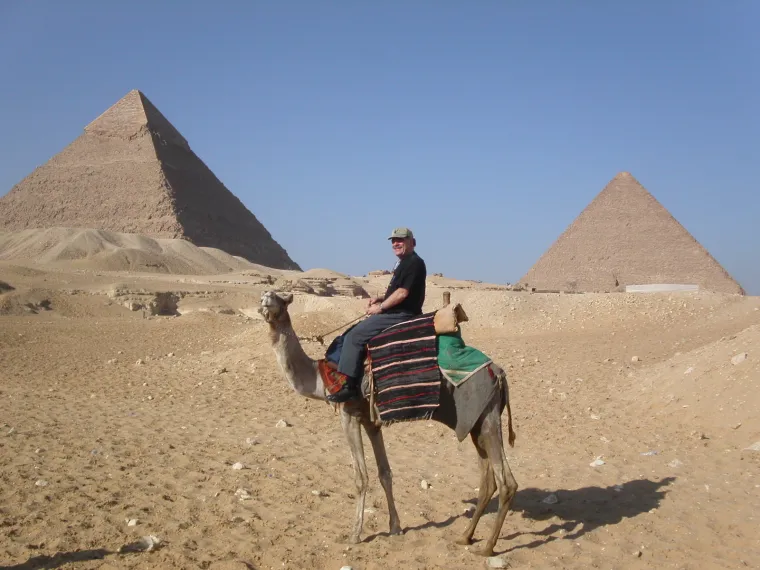
Ever the world traveler, Bob poses during a camel ride following a 2003 International Water History conference in Egypt.
Image courtesy Bob Varady.
As Bob closes the book on his career at UArizona, the Udall Center begins a new chapter – and one that may never have been written had Bob not given the lion’s share of his professional life to seeing this organization through its first third of a century.
From all of us here at the Udall Center, we are proud to be continuing to work in support of your legacy and we look forward to our next opportunity to meet.
Perhaps nobody said it better than current Udall Center Director Andrea Gerlak and so, in closing, we leave you with her words:
“Bob…You are irreplaceable and you will be sorely missed. Thank you for all that you’ve done for the Udall Center, and all that you are.”

